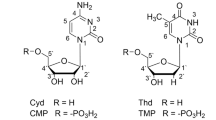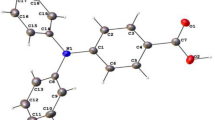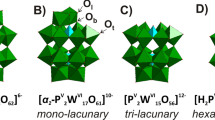Abstract
IT is known that oximes with widely different chemical structures are effective reactivators of cholinesterase inhibited by organo-phosphorous compounds (esters of phosphoric or thiophoric acid, insecticides, nerve gases)1. The mechanism of this reaction is considered to be due to the chemical interaction of oximes with the free or bound ester of phosphoric acid, which is hydrolysed by the oxime2, and is not available for the inhibition of the cholinesterase. It is known that organo-phosphorous compounds catalyse the luminol reaction causing an intensive chemi-luminescence of luminol (3-amino-phthalylhydrazide) in alkaline medium in the presence of sodium perborate as oxygen donor3.
This is a preview of subscription content, access via your institution
Access options
Subscribe to this journal
Receive 51 print issues and online access
$199.00 per year
only $3.90 per issue
Buy this article
- Purchase on Springer Link
- Instant access to full article PDF
Prices may be subject to local taxes which are calculated during checkout
Similar content being viewed by others
References
Davies, D. R., and Greeb, A. L., Brit. J. Industr. Med., 16, 128 (1959). Holmstedt, B., Pharmacol. Rev., 11, 567 (1959).
Green, A. L., and Sasille, B., J. Chem. Soc., 3887 (1956).
Goldenson, J., Anal. Chem., 29, 877 (1957).
Author information
Authors and Affiliations
Rights and permissions
About this article
Cite this article
WEBER, K., MATKOVIĆ, J. & FLEŠ, D. Inhibition of Chemi-luminescence of Luminol by means of Oximes. Nature 191, 177–178 (1961). https://doi.org/10.1038/191177a0
Issue Date:
DOI: https://doi.org/10.1038/191177a0
Comments
By submitting a comment you agree to abide by our Terms and Community Guidelines. If you find something abusive or that does not comply with our terms or guidelines please flag it as inappropriate.



